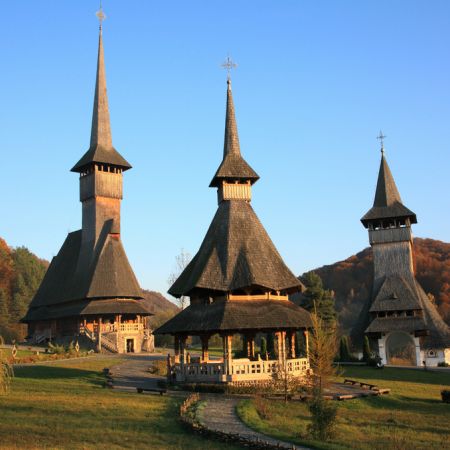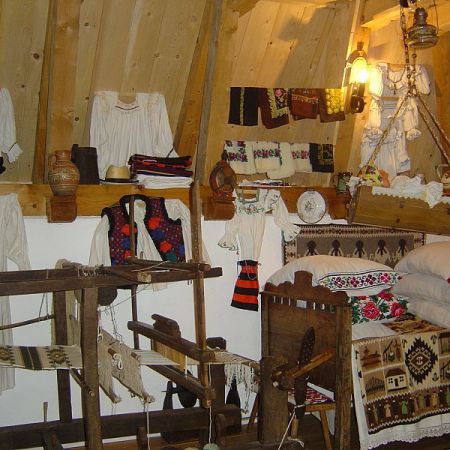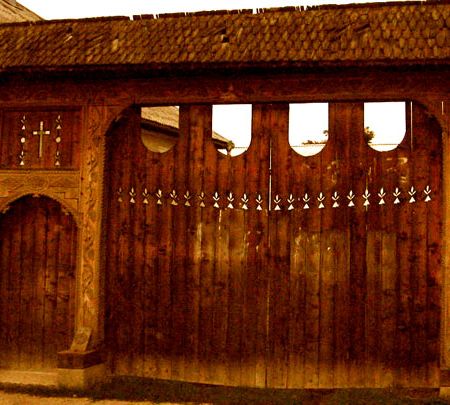
Maramures region lies in a large depression of the Carpathian Mountains, depression located in northern Romania. The region has approximately 10,000 sq. km and there is between the Oas, Tibles, Rodna and Maramures Mountains which attain 2,000 m height. A large part of region have beautiful alpine meadows, forests of firs, oaks and beechs. Maramures is crossed by Iza, Viseu, Cosau and Mara rivers. traditions mixed with increasingly modern elements. The latest modern facilities are combining with old elements, with towels on the walls, wooden floor or ceiling also made of wood.
Many objectives, including churches are part of the UNESCO heritage.
Once we get here we should not miss Iza Valley and Mara Valley with many churches and impressive wooden gates. Nearly the Sighet Marmatiei town, at only 20 km away, lies Ocna Sugatag Lake known for its curative value. The lake is located in the resort with the same name.

Maramures preserves the old traditions more than any region of Romania, being an open air museum, a living museum. We can see here
At the foot of Rodna Mountains there is Borsa resort, settlement located at the altitude of 850 m.
Among the historical objectives in Maramures must be mentioned: Stephan Tower in the Baia Mare town. Butchers’s Bastion from Baia Mare and Mint Building, today the Museum of Maramures county.
The villages in Maramures have beautiful wooden churches.
Barsana Church located in Barsana, near Sighet Marmatiei town, was built in 1720. The term Barsan calls a shepherd, while becoming chair name or surname. Barsana settlement is attested documentary in 1326. The church has an illuminated aspect by the colors that dominate: white, blue, red, green, red, ocher. It is introduced in UNESCO patrimony due to paintings.
Bogdan Voda Church in Bogdan Voda settlement, on the Iza Valley, was built in 1718. Initially, name of settlement was Cuhea and then changed to Bogdan Voda in 1970 in honor of Bogdan Hospodar.
Bogdan Voda Church has a beautiful chandelier carved in wood, made in the eighteenth century, an etched chair dating from the XVIII century and a collection of rare books dating from XVIII and XIX centuries. The archaelogists attest that in same place there was a stone church built in the years 1330-1340.
It is necessary to mention also wood churchs as: Borsa, Botiza, Cornesti, Lapus, Plopis (Unesco patrimony), Valea Stejarului, Poienile Izei ( Unesco patrimony).

Maramures region has carefully preserved the traditions, traditional crafts ( textile woven, ceramics, wood sculpting). The traditional dishes are also very interesting attractions.

































